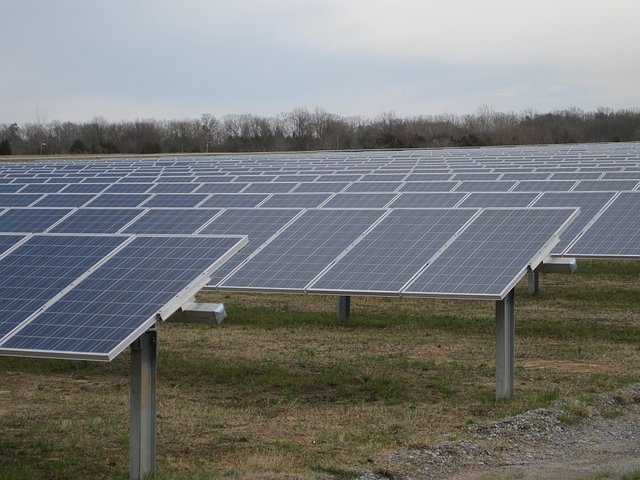A New Kind Of Solar Panel May Replace Silicon Based Solar Panels Soon
Scientists have discovered a new technology to make perovskite solar cells. This will allow us to start mass producing cheaper solar panels.

Memphis, Tennessee. Shelby Farms solar farm
By Thomas R Machnitzki (thomasmachnitzki.com) GFDL or CC BY 3.0], from Wikimedia Commons
Nowadays, most solar panels are based on silicon and those are currently also the most effective ones. The current record in 46 % effectivity (in a laboratory) but the ones you can mass produce, sell and buy usually hover slightly above 22 % effectivity. And while silicon has a huge lead there are also a few other technologies that want to surpass it and one of those are perovskite cells.
Perovskite solar cell technology is one of the fastest when it comes to the speed of development. In 2009 the effectivity of these cells was only around 3.8 %, in 2017 it was 22.7 %. The difference between perovskite and silicon cells is that perovskite can capture most visible light wavelengths allowing the cells to be cheaper compared to silicon where you need several layers.
Most commonly used solar cells work when light falls on them electrons get excited in the negatively charged material and because the electrons move towards the positively charged layer of holes electricity gets produced. Perovskite cells catch photons in a layer that is between a positively charged HTL (Hole Transfer Layer) and a negatively charged ETL (Electron Transport Layer). And while we can produce perovskite cells, so far we’ve had problems with making the ETL into a uniform layer. And when complex solutions don’t work, maybe it is time to try something simple. In the end, scientists discovered that just spray coating is the solution. Plus it easy quick and easy giving us the option to cheaply build bigger and cheaper panels.
In the future, we may see silicon-based solar cells go into retirement. Or least work just part-time. Perovskite solar panels will likely be less effective but they will provide us with a better value deal for the price. Thus they could be ideal for building solar panels on roofs or in solar farms, anywhere we a big area will be used. But in small places where you need as much power for the smallest possible area, we may keep using silicon-based solar panels.
Sources:
- http://pubs.rsc.org/en/Content/ArticleLanding/2018/NR/C8NR01763H#!divAbstract
- https://en.wikipedia.org/wiki/Perovskite_solar_cell
- If you like the content I’m producing about science maybe you will like the content I produce about gaming as well! Be sure to check out my other blogs!
- @gaming-trail Where we are your everyday source of gaming-news!
- @kralizec Where I review video games and make commentaries about video games
Please upvote: https://steemit.com/free/@bible.com/4qcr2i
This is very exciting, what I've heard is usually a far lower conversion rate of about 10% to 15% for average solar cells in normal conditions. I think this has to do also with the arc of the sun as "it moves" (we really do of course) across the sky, and the panels work best when the surface is aimed perpendicular to the rays.
Anyway, I'm looking forward to innovations like this comming to market, especially as sunlight is not so strong in Ireland and it is often cloudy in the west.